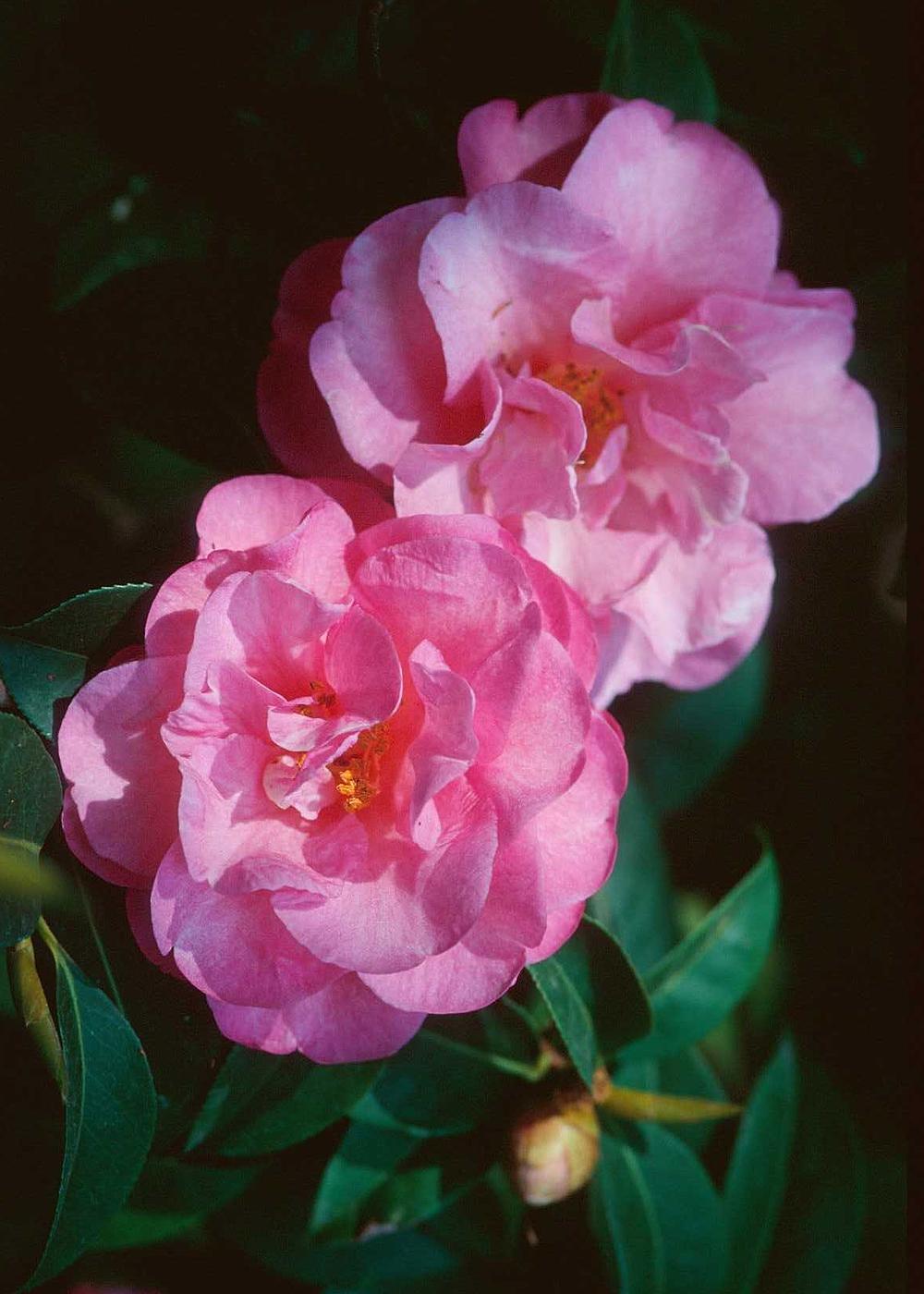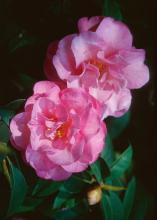Information Possibly Outdated
The information presented on this page was originally released on November 26, 2001. It may not be outdated, but please search our site for more current information. If you plan to quote or reference this information in a publication, please check with the Extension specialist or author before proceeding.
Gibbing adds to camellia beauty
By Norman Winter
MSU Horticulturist
Central Mississippi Research & Extension Center
When you see some camellia japonicas blooming earlier, larger and more colorful than others, you may be seeing the results of a horticultural technique known as gibbing.
As camellia shows start to pop up in malls and other public places, it becomes apparent that some experts know something that the basic gardener may not.
I studied about gibberllic acid back in college. It was in the chapters on growth hormones or growth regulators that made some classes like plant physiology much more interesting. Of course most of us had no idea we would actually get to put some of the things we learned into practice.
While we learned about gibberellic acid, and how it affects plants, camellia lovers, particularly those who compete, were putting it into practice. Gibbing is the practice of applying the plant hormone gibberellic acid to increase the size of blooms. The larger the bush, the more buds that can be treated. Since gibbing is done mostly for shows, gardeners like to leave about 80 percent untreated.
A close examination of your camellia will reveal that most terminal round flower buds have an adjacent smaller pointed bud that is vegetative. In other words, this bud will be producing a new set of leaves in the spring.
The camellia grower who wants to apply gibberellic acid, pinches off the vegetative bud, leaving a small cup of basal bud scales.
After removing the vegetative bud, place one drop of gibberellic acid into the cup or one in the wound if a cup did not remain. Noticeable growth activity in the flower bud will start to occur within two weeks. Then in just five to six weeks, you will have a larger, more colorful bloom.
This will mean you are getting rid of a valuable set of leaves to make food for the camellia, hence the reason camellia lovers will only gibb about 20 percent of a particular bush.
Not all varieties respond to gibbing, but most of the common Camellia japonica varieties do. It is not an exact science on when they will bloom, as temperature and humidity also affects this.
A friend in Brookhaven, Miss., who gibbs and competes has a schedule that was given out from a local camellia society that shows the dates of camellia shows and when to gibb to be ready for each competition.
Gibberllic acid is not something you go buy at the local garden center, but many local camellia societies sell it to their members, and it is also available from the America Camellia Society in Fort Valley, Ga. Their phone number is (478) 967-2358.
If you are thinking that this sounds fun except you have no camellias in the landscape, then it is time to get to the garden center instead of the crowded mall. Selections of camellias, which may be considered the "Queen of Flowering Shrubs," are greatest right now. It is also one of the best times to plant so that roots can get established during these cool days and nights.
Camellias enhance the landscape like no other shrub with their glossy green leaves and exotic looking blooms. Competing in camellia shows is not only fun, but you will find you are developing a camaraderie with a fine bunch of friendly folks who are willing to help you gain knowledge and expertise.



